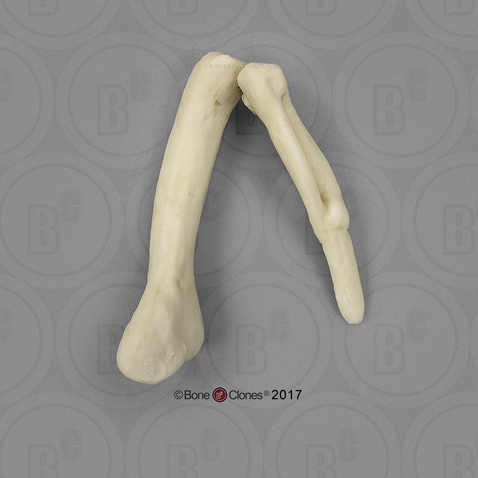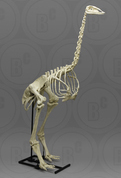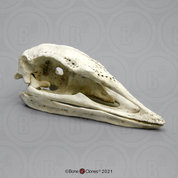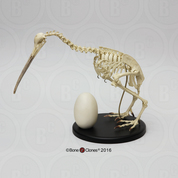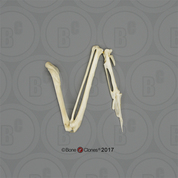-
Fields of Study
- K-12 Education
- Advanced Anatomy
- Forensics
- Physical Therapy
- Primate Locomotion
- Non-primate Locomotion
- Biological Anthropology
- Paleontology
- Bioarchaeology
- Marine-Aquarium
- Veterinary
-
Zoology
- All Zoological Items
- Endangered Species
- Skulls
- Skeletons
- Cranial Elements
- Postcranial Elements
- Eggs
- Limbs
- Teeth & Fangs
- Claws & Talons
- Brains & Endocasts
- Life Casts
- Pathology & Trauma
- Wildlife Forensics
- Sets
- Bird Sets
- Accessories
- Birds
- Mammals
- Reptiles & Amphibians
- Fish
- Sharks & Rays
- Turtles & Tortoises
- Anatomy for the Artist
- Decor
- Veterinary
- Elements
- Pathology & Trauma
-
Sets & Series
- Natural History Gift Ideas
- Decor
- Scale & Sculpture
- 3D Scanned & Printed
- Bone Boxes
- Locomotion Sets
- Forensic Sets
- Advanced Anatomy Sets
- Physical Therapy Series
- Fetal Sets
- Economy Series
- Zoology Sets
- Bird Sets
- Claw & Talon Sets
- Tooth & Fang Sets
- Primate Skull Sets
- Fossil Hominid Sets
- B.I.O.P.S.I. - Babiarz Institute
- Maxwell Collection
- Bergdorf Goodman Windows
- Accessories
- New Products
-
Our Company
- News & Specials
- Printable Handouts
- About Us
- Why Choose Bone Clones
- Bone Clones in the News
- Mission
- Contact Us
- Privacy and Security
- Frequently Asked Questions
- Testimonials
- Community Outreach
- Legal/Copyright
- Flyers
- Choosing Original Specimens
- Museum Exhibitions
- Natural History Gift Ideas
- About the Economy Series
- Acknowledgements
- Ordering & Delivery
- Warranty
- Refund/Return Policy
- Price List at a Glance
- Our Catalog
- Osteological Evaluation Reports
- About 3D Printing
- Sawyer & Maley Neanderthal Reconstruction
- Site Introduction
- Newsletter Archive
-
Human Anatomy
- All Human Anatomy
- Human Skulls
- Human Skeletons
- Head & Neck
- Postcranial Elements
- Advanced Anatomy
- Physical Therapy / Joints
- Human Brains & Endocast
- Human Life Casts
- Maxwell Museum
- Sets & Series
- Accessories
- Osteological Evaluation Reports
- Featured
- Adult Human Anatomy
- Adolescent Human Anatomy
- Child Human Anatomy
- Fetal Human Anatomy
- Fossil Hominids
-
Zoology
- All Zoological Items
- Endangered Species
- Skulls
- Skeletons
- Cranial Elements
- Postcranial Elements
- Eggs
- Limbs
- Teeth & Fangs
- Claws & Talons
- Brains & Endocasts
- Life Casts
- Pathology & Trauma
- Wildlife Forensics
- Sets
- Bird Sets
- Accessories
- Birds
- Mammals
- Reptiles & Amphibians
- Fish
- Sharks & Rays
- Turtles & Tortoises
- Paleontology
- Non-human Primates
- Forensics
All items sold on this website are replicas and are 1:1 scale unless stated otherwise. All Bone Clones® products are made in the USA. No real/natural bone is available on this site.
 ALSO SEE:
ALSO SEE:
Elephant Bird Wing, Articulated
SC-241-67-A $98.00
The wings of an elephant bird follow the classic vertebrate plan for the upper limb, and, although with some modifications for flight, such as modified joints for folding and locking of wings, fused wrist bones and a reduction of digits.
Most avian skeletons include several unique features that enable flight. It is lightweight, often weighing less than the bird’s feathers. Certain bones, called pneumatic bones, are composed of air-sacs supported by cross-struts, which reduces the bone's weight while maintaining its structural rigidity.
There are four basic bird wing shapes, each suited to specific environments and type of flight: Passive Soaring Wings for passively using thermal updrafts over land to soar, glide and circle; Active Soaring Wings for actively seeking air currents over oceans to travel long distances, Elliptical Wings for predator evasion, fast take offs, and short bursts of speed with high maneuverability, and High Speed Wings for prolonged high speed travel. There is one additional specialized shape, for hovering.
Several species of flightless birds occur worldwide and mitochondrial DNA evidence suggests that they evolved independently on at least six different occasions. Flight is highly energy intensive, and when not necessary for survival may be lost, possibly due to the lack of selection pressure. The wings of flightless birds vary in shape, size and function.
Before going extinct, the giant elephant bird of Madagascar is believed to have been the heaviest bird of its time, weighing over a thousand pounds, and reaching nearly 10 feet tall. Although it would not have been able to fly, it nevertheless retained vestigial wings from its flight-able ancestors. Recent DNA evidence suggests that the ratite (flightless and keel-less) group of birds evolved independently from different flight-able species. The group name, from the Latin word for raft, references their sternum’s lack of a keel, a structure essential for anchoring the pectoral muscles necessary for flight. It is thought that lack of predators reduced selection pressures for flight, which is highly energy intensive. This giant bird's closest living relative is the kiwi.
If you have a preference of right or left side, let us know in the comment section during checkout. Otherwise, we will choose.
| Scientific Name | Catalogue # | Size | Price |
| Aepyornis maximus | SC-241-67-A | 6 ¼" L extended 16cm L | $98.00 |
Related Products:
Newsletter Signup
9200 Eton Ave.
Chatsworth, CA 91311 USA
© 1992-2025 Bone Clones Holdings. All Rights Reserved.
Customer Service
© 2025 BONE CLONES HOLDINGS / Made by MEV




